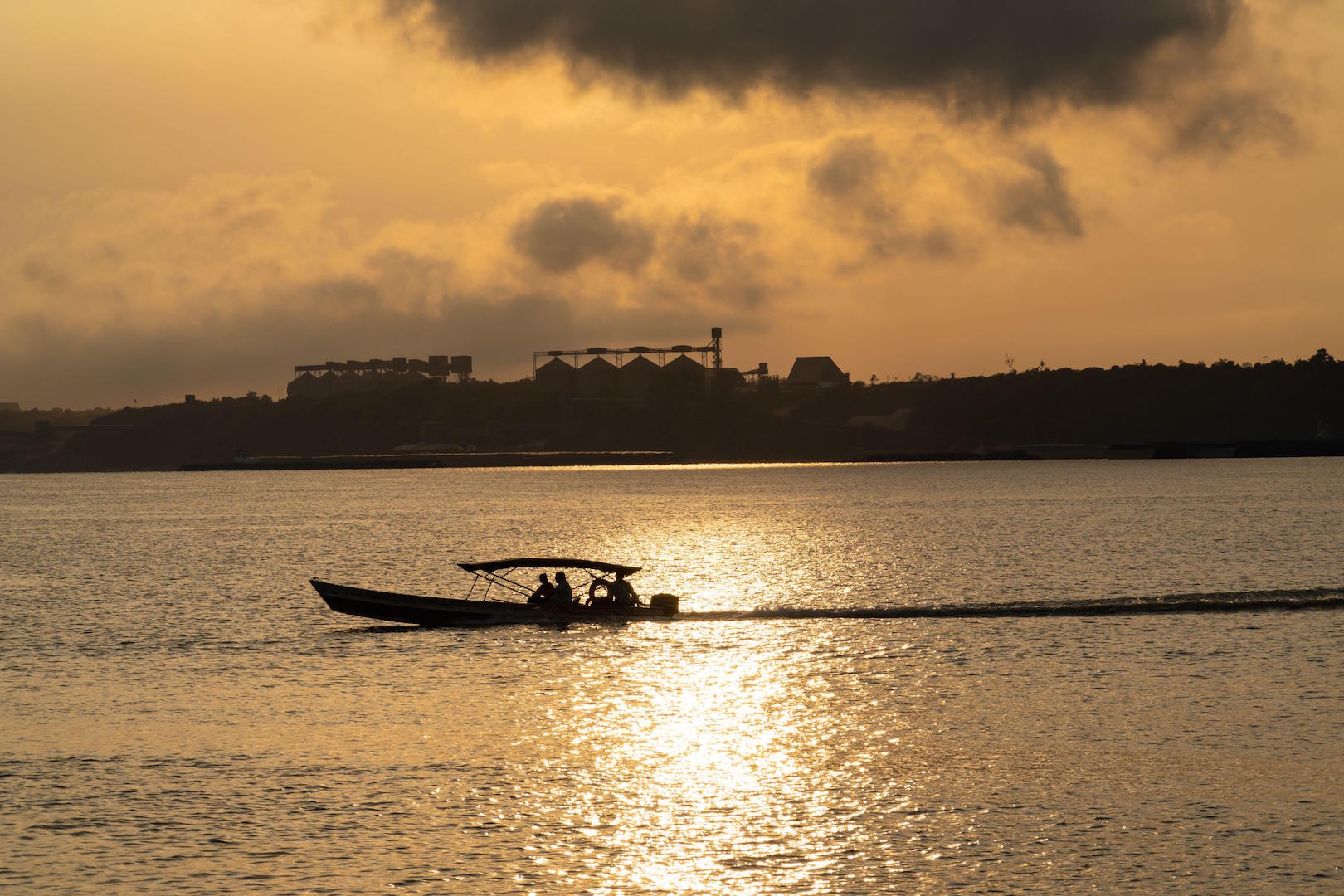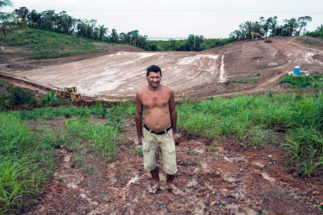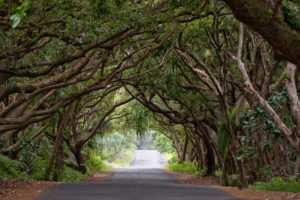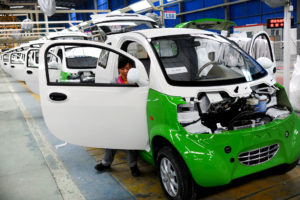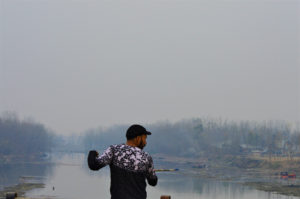Alessandra Korap wanted to be heard. But she’d been invited to the August 2020 court hearing only as an observer, sitting for hours in forced silence, even though she was serving as the sole representative of the Indigenous people whose lands, lives and future would be impacted by a proposed Amazon Basin river port.
Only lawyers and government officials were invited to speak at the online hearing conducted in the midst of the coronavirus pandemic, as Judge Sandra Maria Correia da Silva weighed whether to lift a suspension on a permit for the port, put in place because the project still lacked a prior consultation with the Munduruku, Korap’s people.
For almost a decade, the Munduruku had been unsuccessfully fighting the rapid transformation of the city of Itaituba in Brazil’s Pará state into a key global commodities supply chain hub, and the conversion of their beloved Tapajós River into an industrial waterway — a nexus for the transport of soy and corn out of the heart of the Brazilian Amazon and on to China, the EU and elsewhere.

Since 2013, the community had seen multiple industrial river ports constructed by transnational agribusiness commodity-trading giants, arising on a river that for centuries had been plied only by small boats and Munduruku canoes.
However, never during the building boom had the Indigenous group been formally consulted about commodity industry plans, which prosecutors saw as a clear violation of the International Labour Organization’s Convention 169, an agreement to which Brazil is a signatory.
The new ports had rapidly turned the city, already plagued by major illegal gold mining and logging operations, into a congested destination for commodity-loaded trucks that often clogged the BR-163 highway in kilometers-long traffic jams. Arriving in Itaituba, that cargo was transferred to enormous barges for the downriver journey to ships bound mostly for China. The incoming throng of truckers attracted prostitution and the illegal drug trade, while the barges impacted the river fishery, impoverishing traditional fishers.
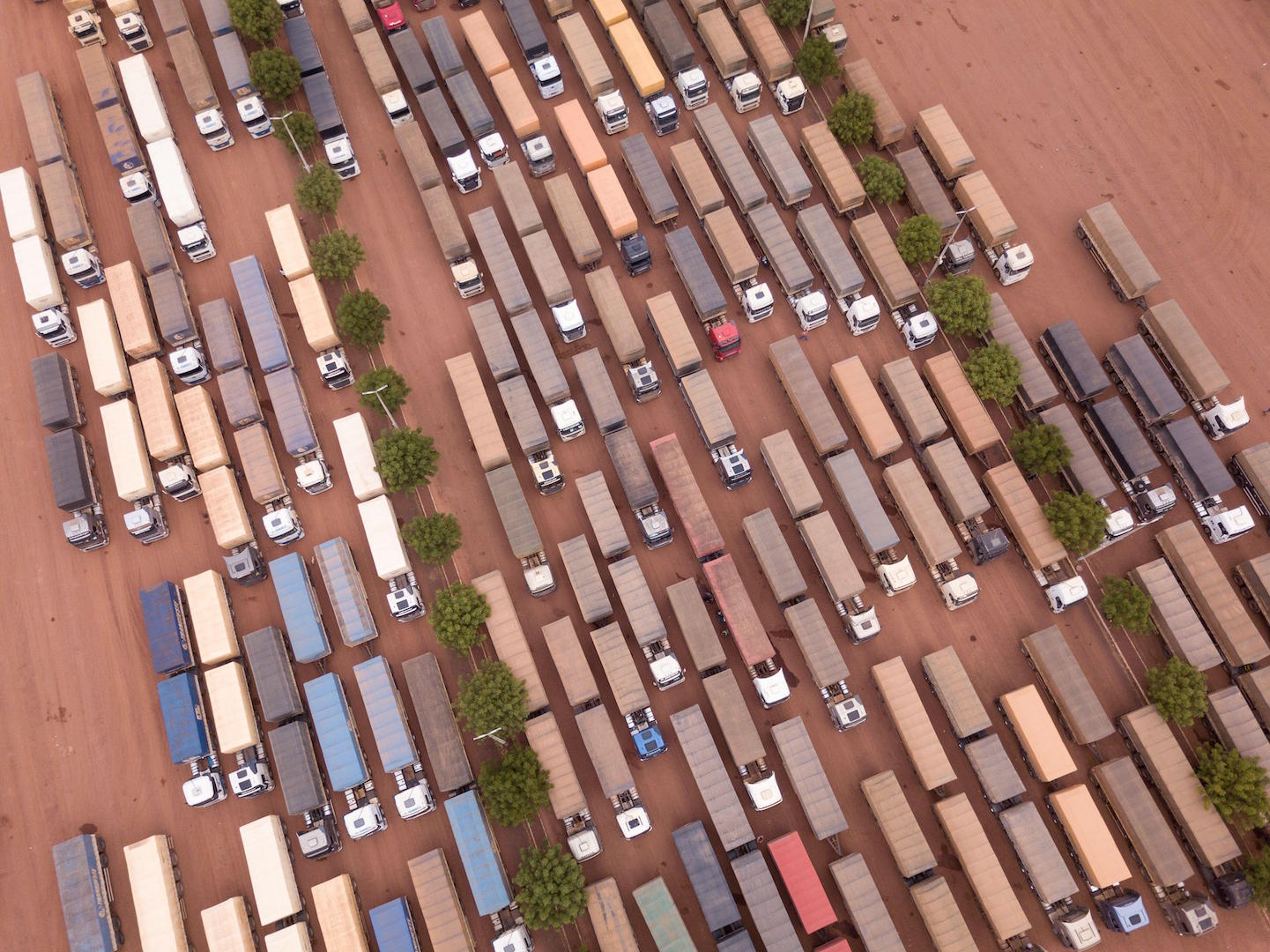
After lawyers friendly to the Munduruku’s cause intervened, Korap was finally allowed to speak. She told the court how the proposed Rio Tapajós Logística port had been preceded by others, how it would likely prompt the construction of a major Amazon railway, and maybe even new dams to make a larger stretch of the Tapajós navigable. The current decision, she emphasised, didn’t just concern one project, but rather a multipronged development plan to change the river and region beyond recognition.
“We know these projects are connected to each other,” she told the judge. “These companies that are arriving are killing us, suffocating our culture.”
From afar, Flávio Acatauassú, who heads Amport, the association representing most companies operating Amazon river ports, was also watching the case unfold. Like Korap, he felt the case had larger implications than just the approval of one port. He contended that a port-friendly outcome in the case was vital not only to all companies with plans to operate along the Tapajós River, but as a precedent assuring the viability of future commodities transport logistics investments across the Amazon Basin.
95
ports have been built or are under construction on the rivers of the Amazon basin
Today, the Amazon’s roughly 100 private industrial river ports are an essential and integral part of the fastest-growing infrastructure corridors in Brazil — moving commodities cheaply and quickly from the nation’s interior to the Atlantic coast for export, Acatauassú explained. Northern river ports, moving cargo via the Amazon River and its tributaries, have more than doubled their market share in the last decade. In the first half of 2020 alone, almost 20% of the country’s soy and corn flowed along the Amazon Basin’s major rivers.
Some 40 planned private projects, worth hundreds of millions of dollars, are now at stake, with many slated for construction in sensitive environments — places like Marajó Island, a delta locale near the mouths of the Amazon and Tocantins rivers, and the biodiversity-rich Maicá Lake.
If the consent of traditional peoples was required for all these projects, then “all the investments in the Amazon Basin would die,” Acatauassú asserted. Still, he was confident that stakeholders would find a way forward. In terms of logistics, he said, Brazilian agribusiness “had nowhere else to run to.”
Turning rivers into industrial waterways
The transformation of the Brazilian Amazon’s many wild rivers into industrial waterways got underway in the early 1990s, mainly as the vision of Amaggi, Brazil’s biggest soy producer and a leading commodities transport company.
The firm’s goal: to increase the value of its quickly expanding soy crop in the southern Amazon, particularly in Mato Grosso state, by finding an efficient means of crossing the rainforest via a cheaper northern river route, more easily reaching buyers abroad. Opening that corridor to the Amazon River and the Atlantic would bypass a long, rugged road journey, and the queues of trucks then clogging Brazil’s southern commercial ports at Paranaguá and Santos.
“We will save … on the freight for each tonne of soy we export,” pledged Blairo Maggi, then the company’s vice president; in 2016, he became agriculture minister during the administration of Michel Temer.
Amaggi’s was a simple plan to build a great barge terminal at the public port of Porto Velho on the Madeira River, a major Amazon tributary that swells with Andes meltwater and becomes navigable between January and August, just in time to transport the soy harvest produced by the rainy season. Trucks would move the crop from the soy fields on the first leg of the journey. Then barges would take over, moving soybeans downstream to an Amaggi-owned private port in the city of Itacoatiara in the eastern part of Amazonas state, where the Madeira meets the Amazon River. There, the commodities would be shifted yet again, this time onto immense oceangoing ships able to export the soy to China and other destinations.
This particular river transportation corridor was inaugurated in 1997. But Brazil’s booming agribusiness producers and transnational commodities companies — eyeing the largest drainage basin in the world — asked themselves: Why stop there?
“If we can do it in the Madeira, we can do it in the Tapajós River; we can do it in the Tocantins River too,” said Amport’s Acatauassú. “That’s when the new [infrastructure] boom started.”
So it was that these first lucrative ports, built with a flood of international capital, and operated by the world’s major grain dealers, proliferated across the Amazon with little government oversight. At least 41 new ports are currently planned or under construction for major rivers in the region.
[chinadialogue_fullwidth]
[/chinadialogue_fullwidth]
Environmentalists and riverine community leaders have raised major concerns about the projects, but have mostly gone unheeded. They are especially worried about the new industrial port development model being widely imposed by agribusiness interests on the world’s largest remaining rainforest and its traditional residents.
Major traders and investors rush in
The idea of an Amazon Basin interconnected by industrial waterways was a vision promoted by one of Brazil’s most renowned scholars, Bertha Becker, who died in 2013. But the geographer also questioned how those waterways would work, and for whom, while stressing a need for an overall strategic plan for the biome and its people.
“For years, we demanded the prioritisation of river navigation,” she wrote a year before her death. “But navigation should consider demand from local people, not just transporting cargo and commodities.”
That hasn’t happened. To date, the port development process has been led by transnational commodities giants, including Cargill, Louis Dreyfus and Bunge, all of which have invested in grain port facilities in the Brazilian Amazon over the last decade. Mining companies, too, including Norsk Hydro, helped develop some of today’s best-established Amazon water routes, including those on the Trombetas, Guamá and Capim rivers.
So far, direct investment from China in Amazon port infrastructure hasn’t been hugely significant. However, China’s growing demand for soy (it already buys more than 80% of Brazilian soybeans), boosted by recent U.S.-China trade tensions, is the main stimulus today for the creation of new Amazon transportation logistics corridors.
Recently, Chinese businesses began entering the game. Cofco, China’s major food trading company, is one of the main clients of Hidrovias do Brasil, a top player in Brazil’s river port industry. Heartened by its already successful Amazon port investments, Hidrovias do Brasil this year completed an initial public offering (IPO) of shares, raising US$600 million. The Shanghai-based New Development Bank, known as the BRICS bank, also issued a US$50 million loan to improve infrastructure in cities lining the Amazon’s BR-163 highway, which connects soy plantations in the agricultural heartland of Mato Grosso to the Tapajós River.
Big companies flourish, traditional communities don’t
Major private investment continues flowing into the rainforest, along with a promise that new infrastructure will bring jobs. But many impacted traditional Amazon communities have seen poverty levels either stagnate or worsen. Barcarena, for example, a city in Pará state, has been deeply transformed in recent decades by mining and new river ports, with residents struggling to adapt to disruptive economic and cultural change.
Ângela Vieira, a 61-year-old activist, notes that while two of her children have jobs with a port company, her village of Vila Nova with its 100 families has now swelled into an 8,000-person community with makeshift, often inadequate social and health services. Poverty, she said, plagues her town, which was once well supplied and supported by small farmers and fishermen. Today, only a quarter of Barcarena’s residents have jobs, less than half the national average.
“We can count on our fingers the number of local people who work at the ports,” Vieira said. “A good share came from other cities.” Though impacts on residents have been profound, Barcarena’s port development was conducted by private companies with scarcely any public input over the last two decades.
What resources do these soy men bring to our city? They only bring destruction
André Ferreira, director of the Institute for Energy and Environment, an NGO, and an expert on infrastructure planning, says he believes the Amazon Basin is suffering the negative consequences of a lack of strategic planning by the federal government. Infrastructure projects are largely created without transparency or consideration of alternative development paths, he told Mongabay and Dialogo Chino.
“The projects belong to whoever is able to mobilise,” he said. “Then, whoever is against it is portrayed as being against the country’s development.”
Brazil has been putting forward elaborate plans to exploit large portions of its 35,000 kilometres (22,000 miles) of waterway since the 1970s. But just a third of the country’s navigable waterway potential has been fulfilled. Meanwhile, Brazil’s ongoing economic crisis has stalled most government plans to improve river trafficability. In fact, the nation is still struggling to complete multimillion-dollar studies for potential projects it commissioned more than five years ago.

The Ministry of Infrastructure didn’t reply to requests for comment. But the Ministry of Agriculture’s press office said in a written note that waterways were by far the cleanest and most efficient way to transport Brazil’s grain production, adding that it wasn’t aware of any environmental impact or social conflict associated with such projects in the Amazon.
Rousseff-era law speeds development
The major regulatory push enabling private companies to install and manage ports independently from public entities came with a 2013 law engineered by the administration of President Dilma Rousseff. Before that, an easier path was for companies to lease areas in the region’s established public ports, as Amaggi did in Porto Velho in the 1990s, and Cargill did in Santarém in the early 2000s.
Since the 2013 law, at least 10 industrial ports — mostly connected to agribusiness — have been built around the city of Itaituba, the transportation hub connecting the BR-163 highway with the Tapajós River. Officials say more than two dozen other ports are planned in the city, at least five of them for commodity giants.
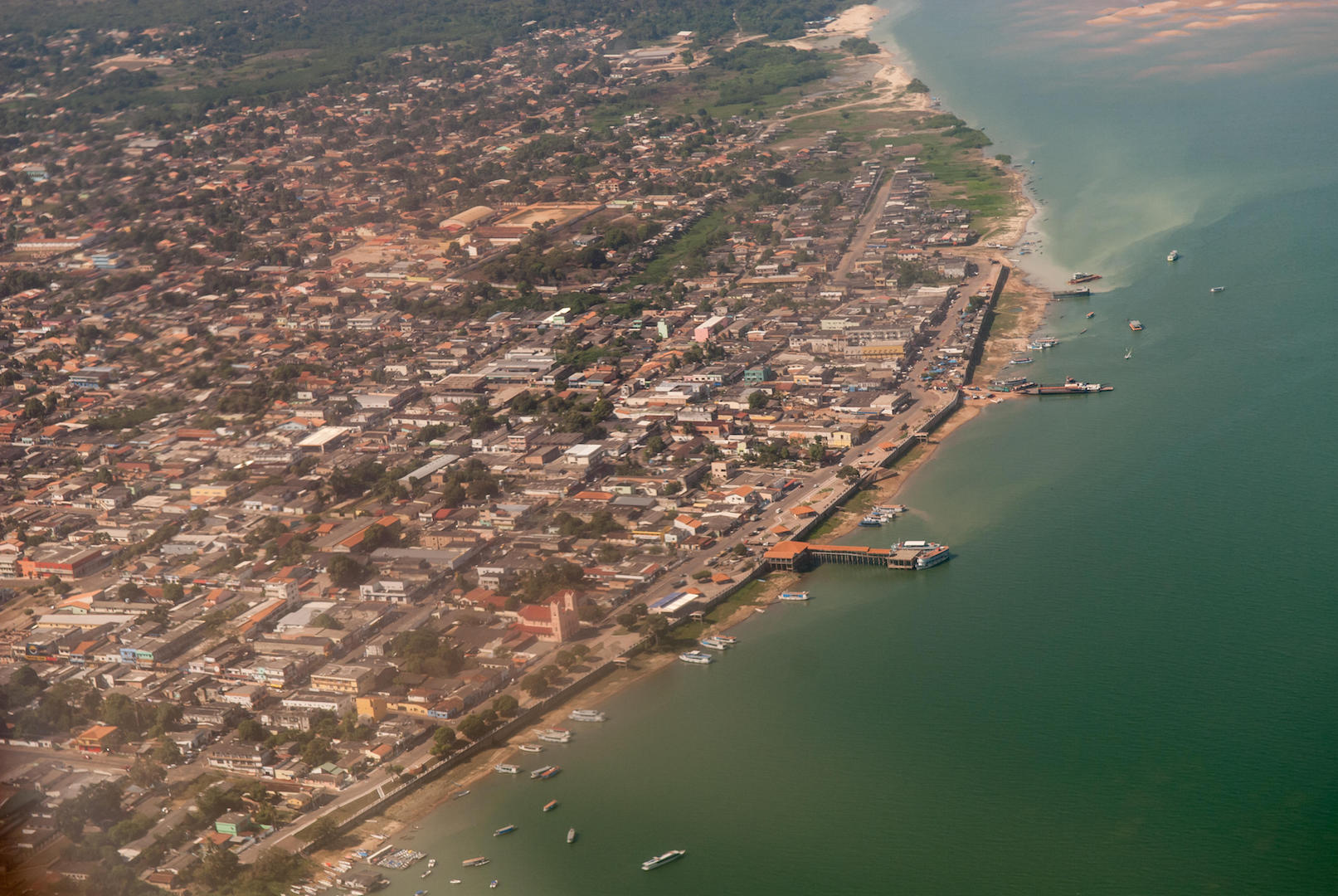
Federal and state prosecutors have criticised the expedited development in the Amazon, arguing that the environmental licensing process for individual port facilities fails to consult affected traditional communities. Nor does construction take into consideration the cumulative socioenvironmental impacts of the wider logistics corridors now taking shape, they say.
For example, to enable the development of an industrial waterway on the Tocantins River, the National Department of Infrastructure and Transportation (DNIT) is planning to dynamite the Lourenço Rocks, a freshwater dolphin and turtle habitat and fishery vital to riverside communities. Meanwhile, on the Madeira River, research showed that waves created by barges were intensifying shore erosion.
“The environmental impacts [of river ports] are relatively big,” said José Neto, a manager at Antaq, Brazil’s port regulatory agency, which is severely understaffed. But “we have very little information” about those impacts, he added. Neto explained that his office only checks whether companies are following existing laws, while local governments are tasked with assessing environmental and social impacts.
Amport’s Acatauassú argued that waterways are far less environmentally damaging than railways and roads, an opinion shared by most environmentalists, including the late Becker. Acatauassú advocates the harnessing of Brazil’s waterway potential in order to curb harm to the Amazon.
Unlike roads, he said, waterways don’t fragment the rainforest, creating a “fish spine” pattern of often illegal side roads that shoot out from major Amazonian highways. In addition, water transport emits just half the greenhouse gases of railways, he said.
Clashes over development; hope for the future
What the port industry calls a comparatively green path for economic development in one of the poorest regions of Brazil, environmentalists and Indigenous activists see as a major threat to the world’s most biodiverse rainforest and its traditional communities.
Itaituba’s Indigenous population, for example, complains of its continued exclusion from local prosperity. While the city now boasts multiple ports, only 13% of its residents have formal jobs. In addition, of the four agribusiness ports now in operation, none consulted with the Munduruku before construction, as required by international and Brazilian law, according to Indigenous leader Korap.
So it came as a surprise when, at the conclusion of the August 2020 online hearing, Judge Correia da Silva decided to uphold a halt to the planned Rio Tapajós Logística port facility, arguing that she couldn’t let the company follow the same path of previous port projects because they were built without consulting the Munduruku and were therefore unconstitutional.
They say they won’t do it now…but suddenly it explodes with this rush to get it done
Amport’s Acatuassú responded by claiming that the companies involved made repeated attempts to consult Indigenous groups, but that the government had failed to inform them of the official consultation process. Funai, the federal Indigenous affairs agency, sent detailed instructions on how to start the process in October.
All five companies involved are funding a study looking at the proposed port’s potential impacts on the Munduruku. But with the coronavirus pandemic still raging, the consultation conclusion date remains anyone’s guess.
Pedro Martins, from the NGO Terra de Direitos, has been following Amazon port development and participated in the hearing. He declared the outcome “a great victory.” Despite that, he added, it’s likely the Munduruku consultation process will result not in the undoing of the logistics hub.
In a prospectus provided at its initial public offering, Hidrovias do Brasil described its Itaituba port, one of the four that went ahead without consulting the Munduruku, as a key company asset. The firm also warned investors that environmental regulations could severely restrict its ability to do business, and that its logistics operations might “result in damages to the environment and Indigenous and traditional Black communities, whose extension and reparation costs are not possible to estimate.”
Soy spreads ever northward
Valmir Climaco, Itaituba’s mayor and a cattle rancher, denies that ongoing port construction in his city will lead to increased Amazon deforestation. But he also admits openly to his plan to invest heavily in soy as soon as possible. “Whatever the Amazônia Bank gives me, I’ll invest,” he said. “I’m asking for 4 or 5 million reais [US$740,000 to US$930,000] to buy a harvester and other equipment.”
Environmentalists fear that such speculative ventures could help propel proposed industrial waterway expansion while also pushing commodity production steadily northward into the rainforest. Since the Madeira River ports were inaugurated in 1997, for example, soy cultivation in Mato Grosso, where Amaggi first grew its empire, has expanded fourfold, while an area three times the size of the Netherlands was deforested.
Brazil was able to grow its agribusiness sector without hiking Amazon deforestation rates between 2005 and 2012, but history has shown that when Amazon law enforcement is weak — as it is now under the administration of President Jair Bolsonaro — soy and beef production pose major deforestation risks.
Amazonian states are now increasingly joining the agribusiness bonanza. In the state of Acre, for example, government officials recently aligned with agribusiness leaders to support more soy farming, envisioning the creation of a vast special agricultural development zone they call Amacro, a portmanteau of the state names of Amazonas, Acre and Rondônia. Their inspiration is Matopiba, an agribusiness epicentre in the Brazilian Cerrado biome, named after four savanna states where cattle and soy production and deforestation levels are now at all-time highs.
As part of this Amazon agribusiness push, soy industry representatives in Rondônia — the state in which Amaggi’s original Madeira port is located — are planning to triple their production area in four years. It is unclear whether this plan will challenge the limits set by the 2006 Amazon Soy Moratorium, in which commodities companies voluntarily agreed to a ban on buying soybeans produced on recently deforested lands.
The area where the socioenvironmental impacts of this agribusiness surge are perhaps now most visible is Planalto Santareno, near the Santarém port complex in Pará. There, the Munduruku have been restricted in their ability to fish, seen few job opportunities, endured water poisoned with pesticides used in soy cultivation, and suffered violence associated with land conflicts.
“What resources do these soy men bring to our city?” asked Manoel Munduruku, an Indigenous leader. “They only bring destruction.”
Agribusiness encroachment is underway elsewhere in the northern Amazon. After the completion of the paving of the BR-163 last November, farmers from the southern state of Paraná, searching for cheap land on which to grow soy, flocked to Novo Progresso, a part of Pará notorious for Brazil’s most violent land conflicts and rampant deforestation.
Against this backdrop, challenges to the Amazon Soy Moratorium have grown louder. Abiove, an association representing commodities trading companies, and Aprosoja, which represents soy producers, have clashed over the agreement. Simultaneously, government support has faded, with Agriculture Minister Tereza Cristina expressing her discontent at the voluntary agreement multiple times.
“I think it’s absurd,” she said at a November 2019 conference.
Dawn of the next infrastructure boom
Scientist Philip Fearnside, from the National Institute of Amazon Research, has studied regional industrial waterway impacts for decades. He says he worries that existing infrastructure will inspire more megaprojects, including dams, affecting numerous Indigenous reserves. He notes that new dams on the Tapajós River could facilitate the construction of locks where there are now waterfalls, extending the industrial waterway upstream all the way to Mato Grosso’s grain-producing areas.
“They say they won’t do it now,” he says, “but suddenly it explodes with this rush to get it done.”
The government already plans to invite bids on one major project connected to the Tapajós waterway this year: the Ferrogrão Railway, or GrainRail. Reports in the Brazilian press say GrainRail is a top candidate to tap into the Brazil-China Fund, a multibillion-dollar investment instrument designed to support projects in the interest of both the Chinese and Brazilian governments.
The tracks would run parallel to the Tapajós River and BR-163, creating a rail, road and water transportation corridor linking the city of Sinop in Mato Grosso with Itaituba in Pará. A study by the Climate Policy Initiative calculated that Ferrogrão would support expanding plantations set to deforest more than 200,000 hectares (500,000 acres).
Minister of Infrastructure Tarcísio Gomes de Freitas said the railway represents the “integration between the two cleanest modes of transport that exist, in favour of the Amazon.”
Korap, the Munduruku leader, says she’s frustrated by where things seem headed, and that she worries the Brazilian government will continue to trample on her people’s rights to benefit major infrastructure developers, investors and agricultural producers.
“Brazilian law is not made for us Indigenous people, or for the environment. It’s made for agribusiness,” she said, adding that the country has little to gain by giving in to corporate interests. “All the profit goes to Europe, China, the US. We are left with very little.”
This story was co-produced and co-published by Mongabay and Diálogo Chino
